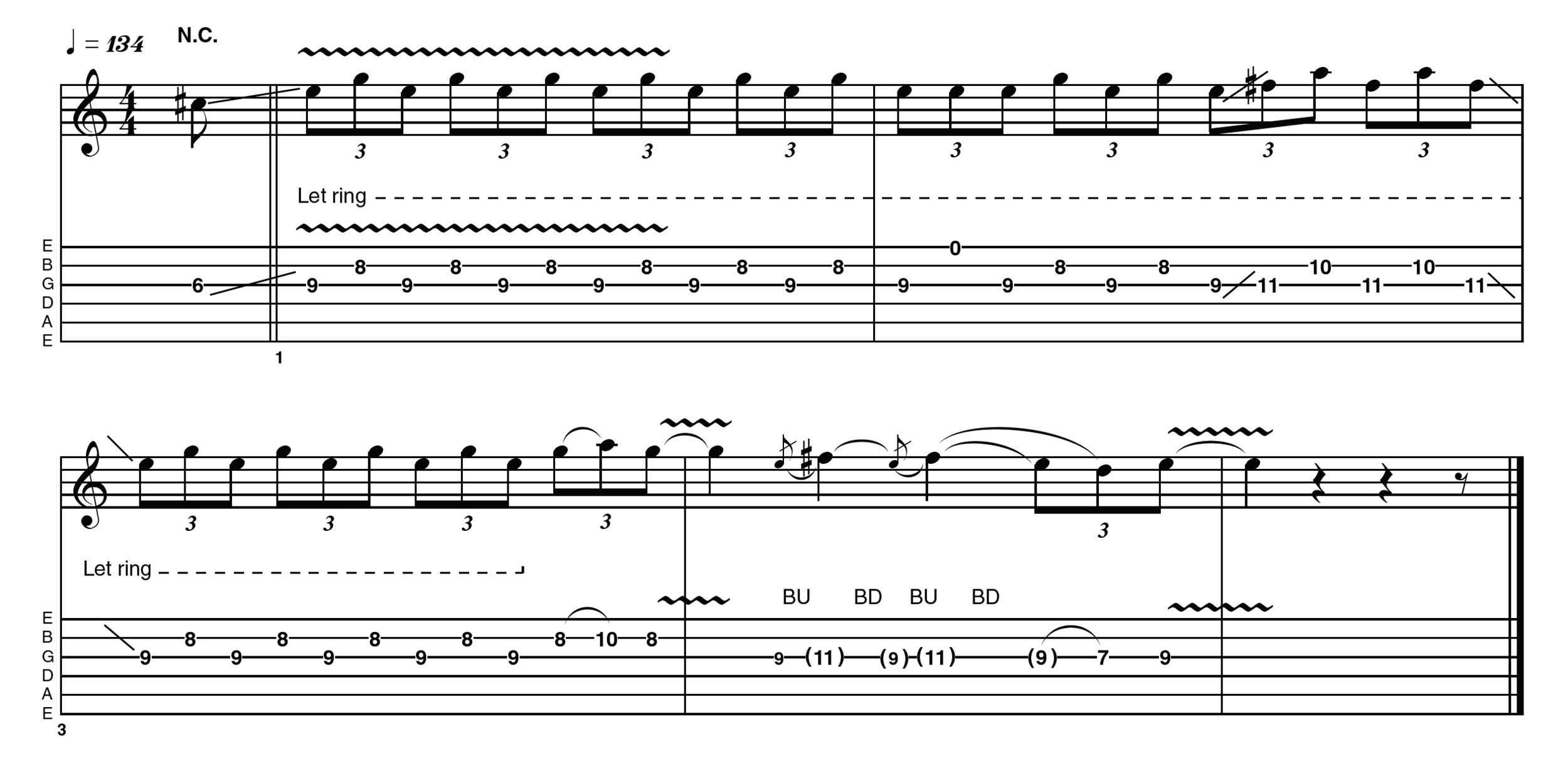How to play psychedelic Mixolydian blues
This lesson demonstrates how modal approach to blues can open up your musical options, adding some Mixolydian folk spice in the style of Robby Krieger, Eric Clapton and Jimi Hendrix

If you’ve already ventured into what many regard as the mysterious world of modes, the name Mixolydian may be familiar to you. If not, no problem. My own approach to modes has always been intuitive, rather than methodical, but whichever way you choose to proceed, there should be something in this article for you.
I think we can agree that when soloing over a 12-bar blues in the key of A major, the A major scale would not be conducive to cool-sounding blues solos. Try this yourself over the backing if you’re not convinced. Yes, it’s possible to come up with a phrase here and there, but the overall impression is that the A major scale (A B C# D E F# G# A) is not a great fit.
One of the reasons for this is the way the grouping of notes leads us in an unhelpful direction – more Sailor’s Hornpipe than Stormy Monday… Another is that the I-IV-V progression of the standard 12-bar sequence (and I think it’s fair to say blues chord sequences generally) leans heavily on the dominant or b7th; think A7 rather than Amaj7.
If we take a look at the A major pentatonic (A B C# E F# A) and then A Mixolydian (A B C# D E F# G A), you’ll see they have most of their notes in common. Thinking of the Mixolydian as a couple of extra notes we can add to give a ‘deluxe’ version of the A major pentatonic is probably the easiest way for the non-theoretically-inclined to relate to this and expand their options, especially if you apply this approach to all five shapes of the major pentatonic!
In the example solo, I’ve tried not to be too ‘studied’ about this and only play strict Mixolydian lines as I think this would miss the point. However, you’ll notice lots of G: the flat/dominant 7th and key ingredient of Mixolydian in A. Hope you enjoy and see you next time!
Example 1

This opening phrase gets straight to the point, sliding from C# to E then adding a ringing G (dominant/b7th) to clearly state our Mixolydian intentions! Sliding briefly up two frets adds a little variety – some might call this a partial D chord, though the F#, A and open E are all part of the A Mixolydian mode.
In any case, we head straight back to the original position, before switching to a more single-note approach but remaining within the Mixolydian mode.
Example 2

A couple of quick slides between positions lands us at shape 3 of the A major pentatonic, between the 9th and 12th frets. Adding in the G from the Mixolydian opens up the possibility of an arpeggio style run that comprises the main part of this phrase.
As with any grouping of notes, there are many ways it could be phrased – I’ve gone with a triplet feel, but this is not the last word!
Example 3

Starting from where I finished at the end of Example 2, there is then a shift in position – and tonality – down to the A minor pentatonic. This fits because the backing track is very ‘modal’-sounding and riff-based, rather than a selection of straight up major or minor chords.
This minor pentatonic remains a feature until the end of the solo, though at this point the feel has been established as not a ‘straight’ blues solo.
Example 4

Moving to a low register for some riff-style phrases, both the minor 3rd (C) and major 3rd (C#) feature here. We could discuss whether the G (minor/dominant 7th) appears as part of the Mixolydian mode or the A minor pentatonic, but I’m not sure how productive that would be… Perhaps the ultimate goal would be to recognise that there is an overlap here and get on with making some cool music!
Hear It Here
The Doors – Morrison Hotel
This album features a bold mix of blues and psychedelia, with Robby Krieger’s unique twist on the blues all over tracks such as Waiting For The Sun, Blue Sunday (featuring a major 7th, rather than dominant 7th/Mixolydian feel) and Indian Summer, which really epitomises the mix of styles happening everywhere at the time (1970). Note the lack of distorted solos and how the lines are woven in and out of the chords themselves.
Cream – Royal Albert Hall 2-3-5-6 2005 (Live)
Taken from Cream’s reunion/farewell concerts, these recordings show that the spirit was still strong in this trio, with that trademark exploratory approach from the turn of the 60s and 70s.
Check out I’m So Glad (a Mixolydian chord progression by virtue of including a D major chord), Rollin’ and Tumblin’ and, of course, Crossroads – a very Mixolydian-style riff, with the bonus of alternative solos to the classic original.
The Jimi Hendrix Experience – Are You Experienced
Dating back to 1967, it’s probably fair to call this a benchmark of the collision between blues and psychedelia that was happening at that time. Check out the very Mixolydian Love Or Confusion, Fire (which isn’t the most obvious example at first, but try a D Mixolydian over this for a perfect fit), and the title track for another very psychedelic approach to the Mixolydian (backwards solo optional).
Get The Pick Newsletter
All the latest guitar news, interviews, lessons, reviews, deals and more, direct to your inbox!
As well as a longtime contributor to Guitarist and Guitar Techniques, Richard is Tony Hadley’s longstanding guitarist, and has worked with everyone from Roger Daltrey to Ronan Keating.
“There are so many sounds to be discovered when you get away from using a pick”: Jared James Nichols shows you how to add “snap, crackle and pop” to your playing with banjo rolls and string snaps
Don't let chord inversions bamboozle you. It's simply the case of shuffling the notes around










![Joe Bonamassa [left] wears a deep blue suit and polka-dotted shirt and plays his green refin Strat; the late Irish blues legend Rory Gallagher [right] screams and inflicts some punishment on his heavily worn number one Stratocaster.](https://cdn.mos.cms.futurecdn.net/cw28h7UBcTVfTLs7p7eiLe.jpg)


